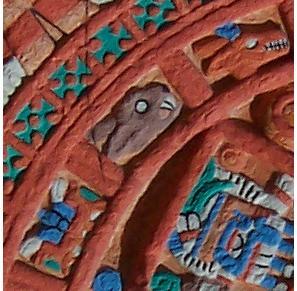Visual language facts for kids
A visual language is a way of communicating using pictures, symbols, and other visual things. Think of it like talking, but with your eyes instead of your voice! Humans use both spoken words and visual signs to share ideas. This article will help you understand how we "talk" with images.
Contents
What is Visual Language?
When you see a picture that tells a story, it's using a visual language. Just like we can "talk out" our thoughts, we can also "picture" them. A diagram, a map, or a painting are all examples of visual language in action.
The building blocks of visual language include:
- Lines and shapes
- Colors and forms
- Movement and textures
- Patterns and directions
- Size and angles
- Space and how things fit together
In visual language, ideas are shown in a space, not in a straight line like words. Both speaking and seeing are important ways humans share information. They often work together.
How We See and Understand
Our brains are amazing at understanding visual messages. Lines and marks come together to form shapes and signs that have meaning. Different parts of your brain react to different things, like colors or shapes. Scientists have even studied how our brains respond to famous paintings by artists like Michelangelo and Pablo Picasso.
Pictures in Your Mind
What you see when you are awake and what you imagine in dreams are very similar. Dream images can have sounds, colors, or even spoken words. When you are awake, you usually focus on what's around you. You also have feelings, moods, and quick memories.
Sometimes, when you are daydreaming, your mind creates images. You might see shapes in the clouds, like animals or people. This is your imagination at work! Scientists like Rudolf Arnheim have tried to figure out what these mental images look like.
Early Greek thinkers believed that a copy of an object entered your eye. They thought it stayed in your mind as a complete memory. Later, others realized we can imagine just parts of things, like a leg instead of a whole body. Our mental images are often vague, like an "impression." But they still carry meaning.
Meaning in Art and Symbols
Even without words or realistic pictures, lines, shapes, and colors can tell a story. This is what Abstract art shows us. For example, artist Wassily Kandinsky proved that simple lines can be expressive. They don't need to look like anything real.
People have used visual language to share meaning for thousands of years. Ancient rock carvings, like the Badger Stone, are covered in symbols. These symbols tell stories from a time before written words. Some thinkers believe that seeing imaginary situations, like our ancestors did with cave paintings, helped us develop abstract thinking.
How We Perceive Things
Your sense of sight doesn't just record everything. It actively judges sizes and colors. Your brain also sorts shapes and images into categories. Babies, between six and twelve months old, learn to tell the difference between circles, squares, and triangles. As children grow, they learn to classify objects. They pick out key features and compare them to similar things. Before you can identify an object, your brain must be able to sort out its different shapes and sizes. This is true even if the object looks different from various angles or in different places.
Brain's Natural Patterns
When you see a shape, your brain tries to understand its main features. It wants to create a "whole" picture, or a gestalt. The idea of gestalt was first suggested in 1890. It means that the whole is more than just the sum of its parts. For example, you can still recognize a song even if it's played in a different key.
Later, Max Wertheimer studied this idea. He found that your eye tends to group things that look alike. It also tries to complete shapes that are not finished. For instance, random dots often form patterns in your mind. These natural abilities show how your eyes and brain look for patterns and simple, complete shapes. When we look at complex art, we see that artists have always tried to "write down" visual information.
Thinking with Pictures
Our thoughts are complex and connected. They happen at a sensory level. Our minds often think using senses like sight. The brain has two halves, called hemispheres. A thick bundle of nerves connects them, letting them talk to each other.
For most people, the ability to speak is mainly in the left side of the brain. But understanding space and visuals depends more on the right side. However, both sides work together. Experts believe that humans have a natural ability to create mental images. We can then show these ideas through sketching, drawing, or acting. This "visual thinking" is a basic part of how we think. It's just as important as thinking with words.
Art in Learning
Visual language starts developing when babies are very young. Their eyes and brains learn to focus and recognize patterns. Children's drawings show how they become more aware of the world. They use more elements to express their feelings and ideas.
Learning to communicate visually is sometimes called graphicacy. It's like literacy (reading and writing) and numeracy (math skills). Being able to think and share ideas visually is just as important in learning. Artists are skilled at using visual language to share their ideas. This includes both understanding and creating concepts in a visual way.
See also
 In Spanish: Lenguaje visual para niños
In Spanish: Lenguaje visual para niños
- Asemic writing
- Emoji
- Musivisual language
- Nocturne (painting)
- Nonverbal communication
- Pictogram
- Writing system


